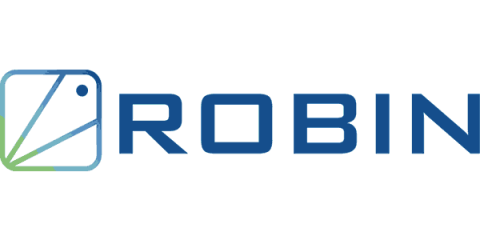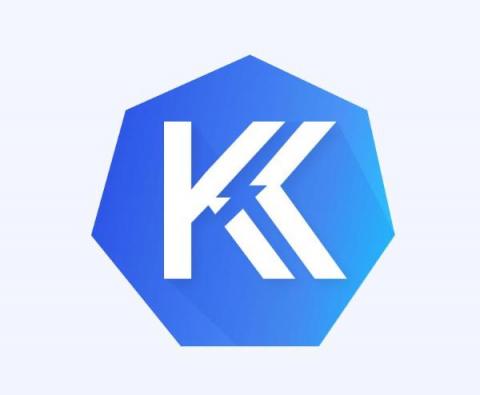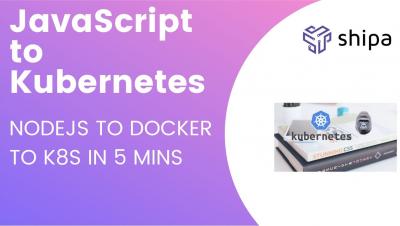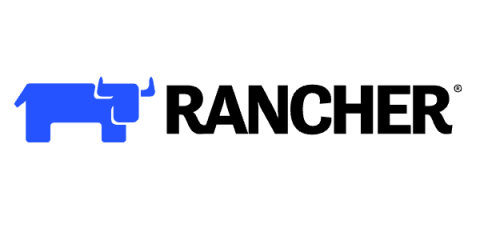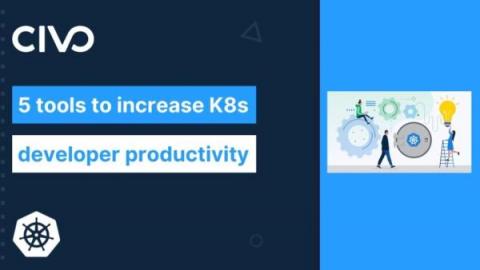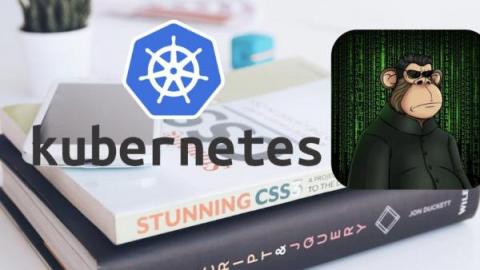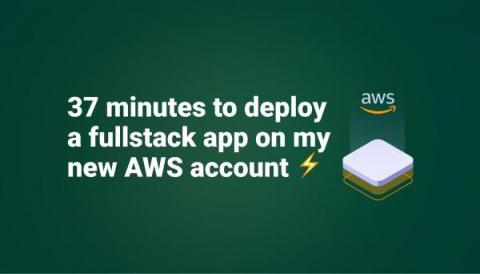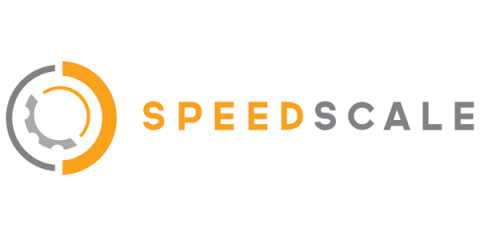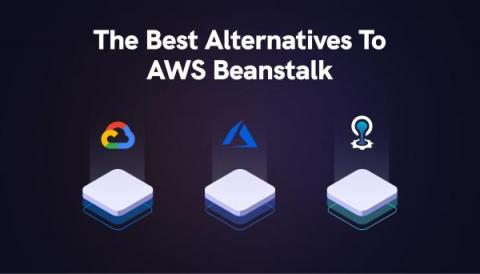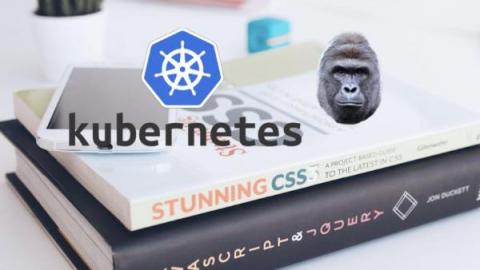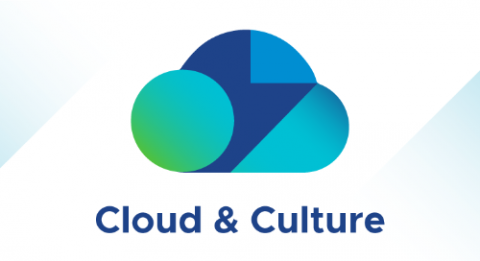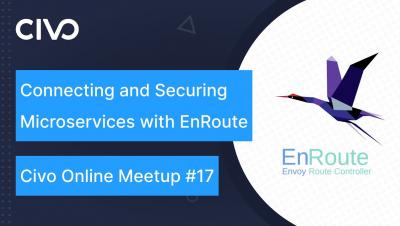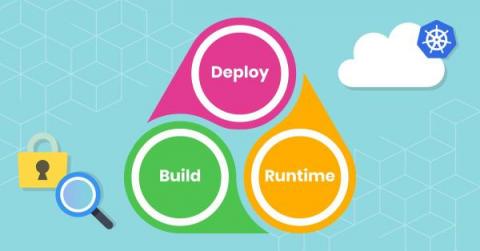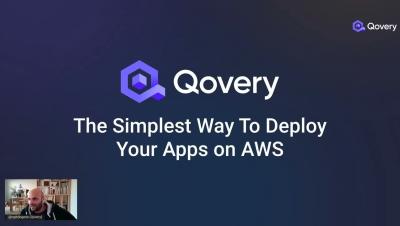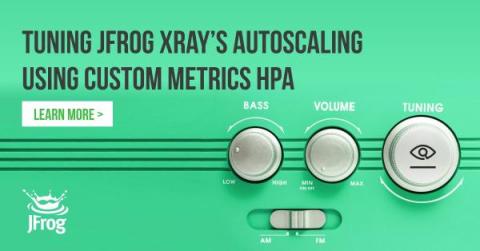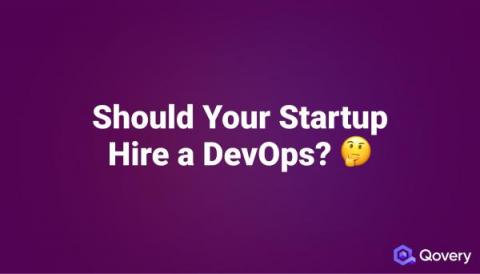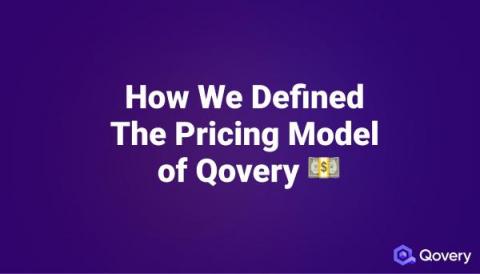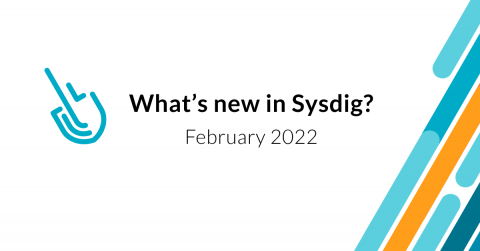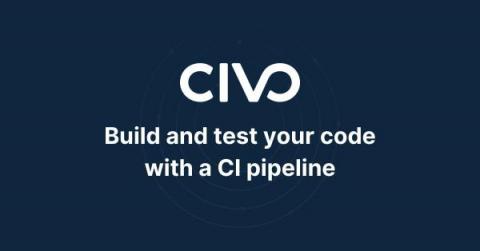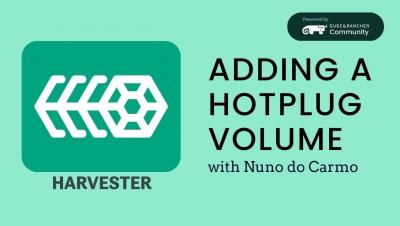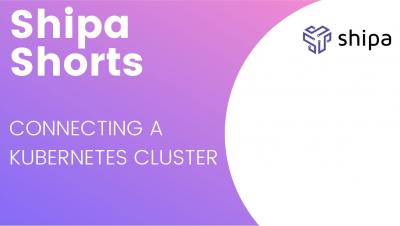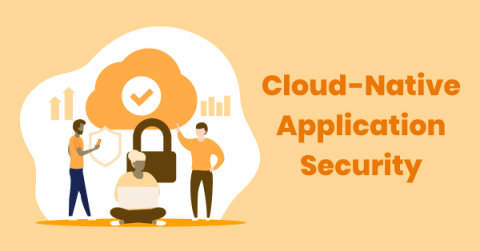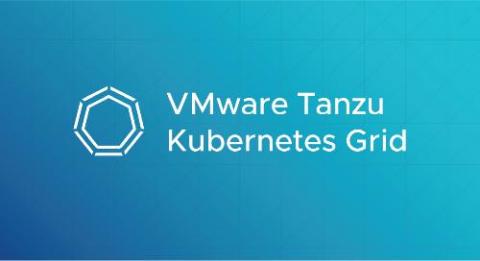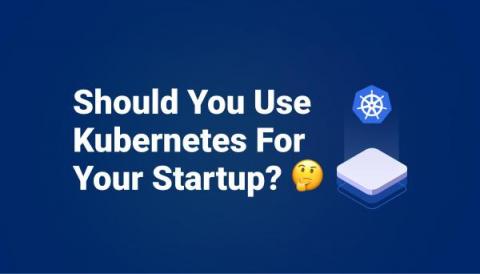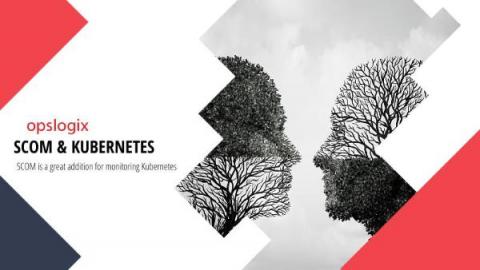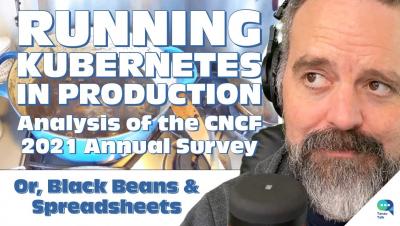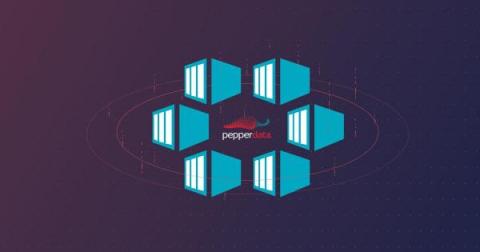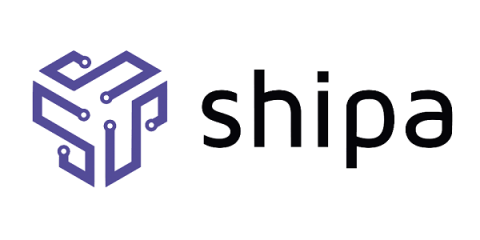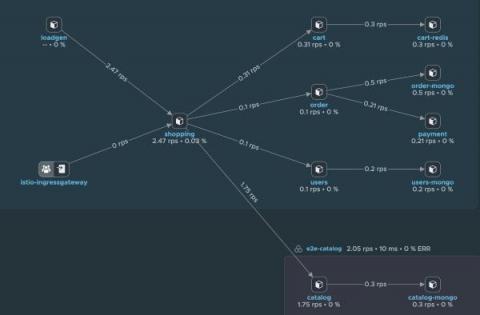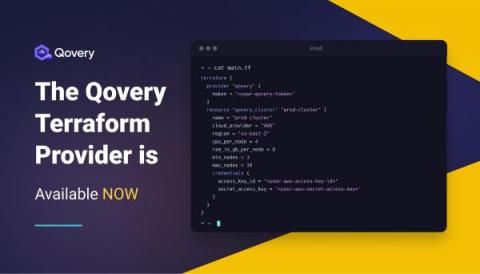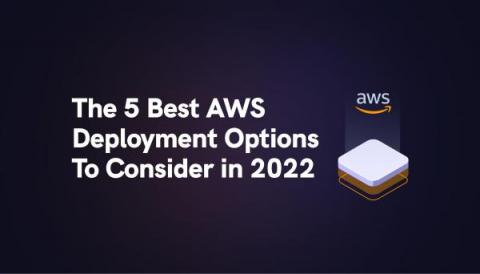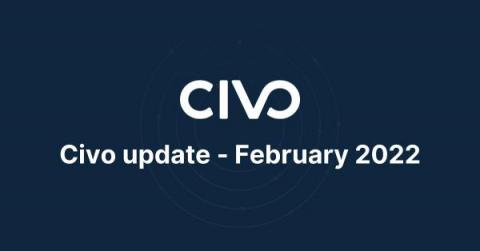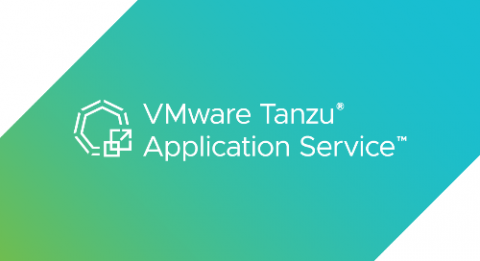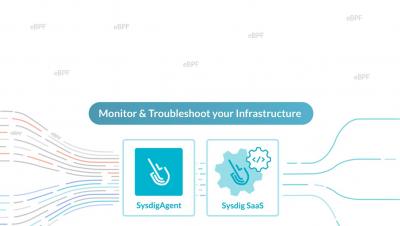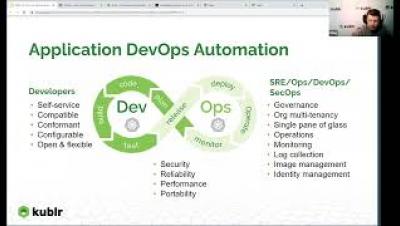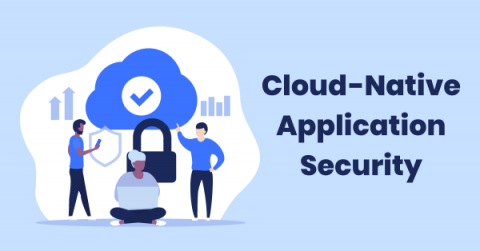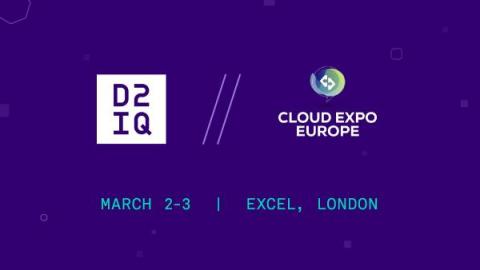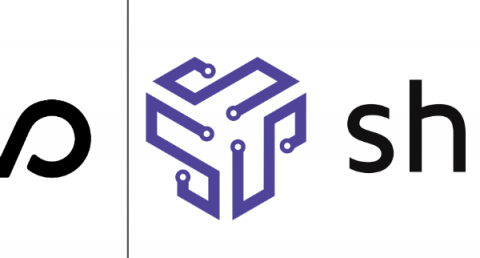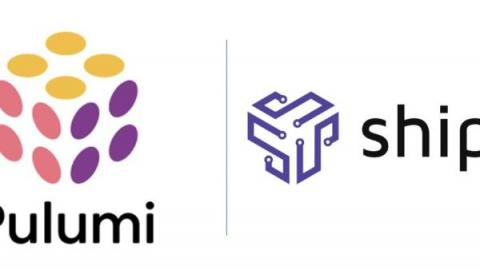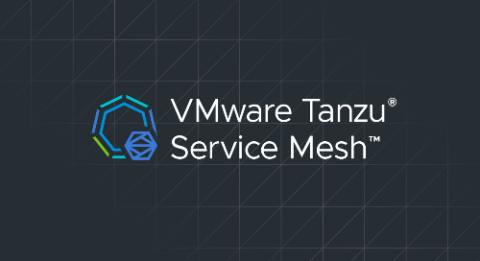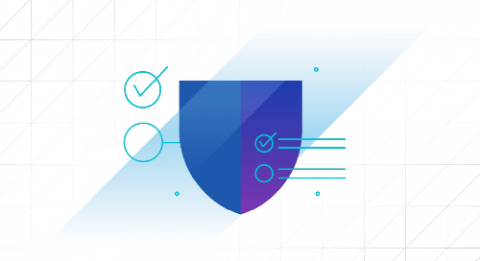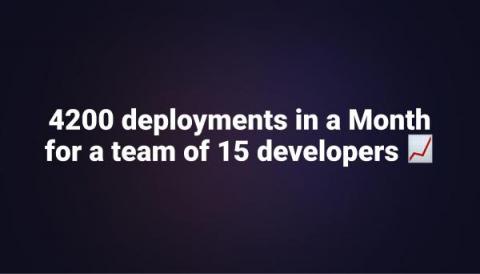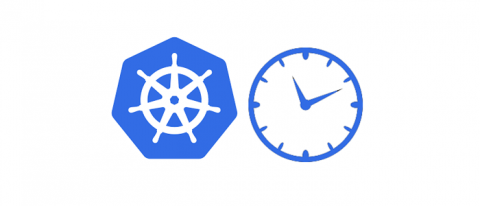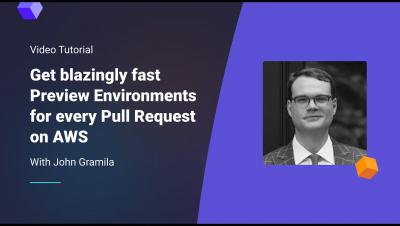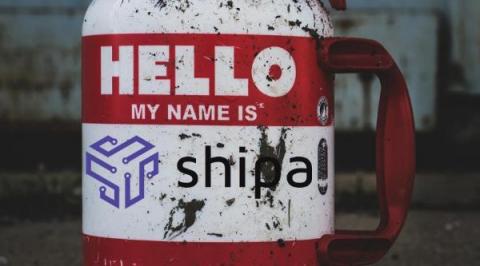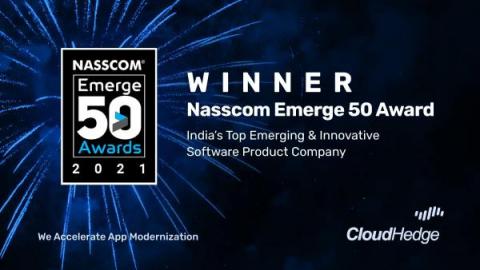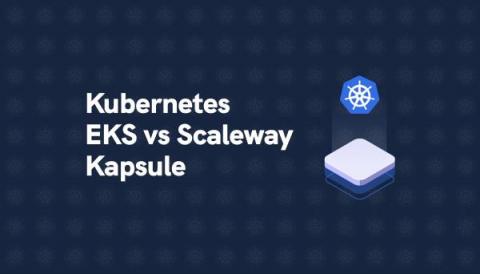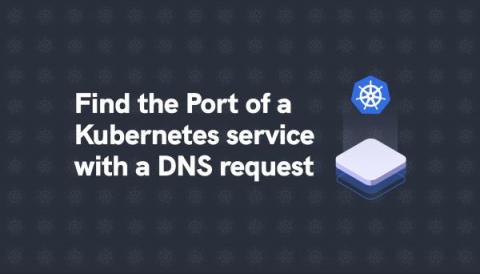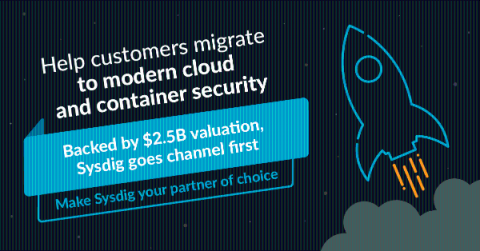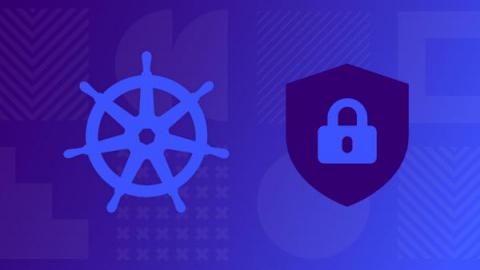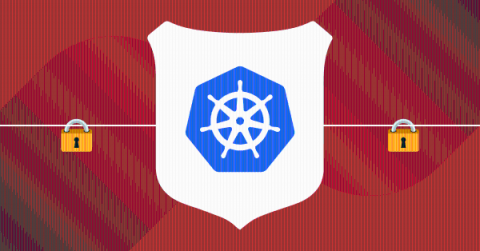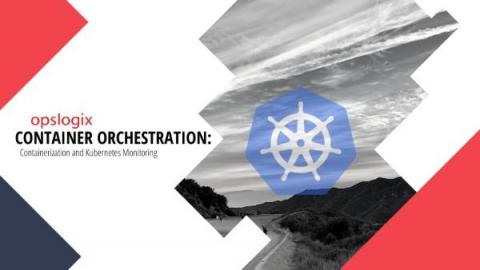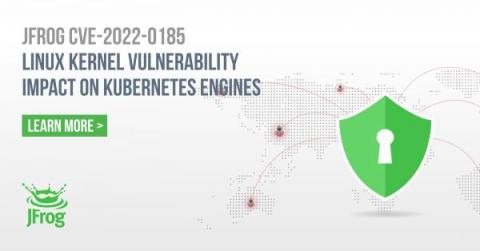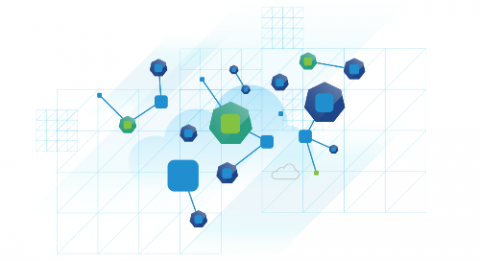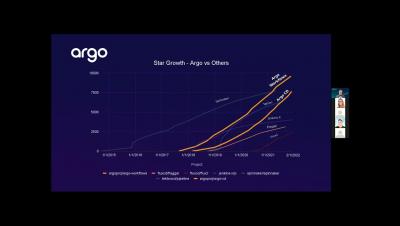Operations | Monitoring | ITSM | DevOps | Cloud
February 2022
Lightrun Releases KoolKits - Debugging Toolkits for Kubernetes
KoolKits (Kubernetes toolkits) are highly-opinionated, language-specific, batteries-included debug container images for Kubernetes. In practice, they’re what you would’ve installed on your production pods if you were stuck during a tough debug session in an unfamiliar shell. To briefly give some background, note that these container images are intended for use with the new kubectl debug feature, which spins up Ephemeral containers for interactive troubleshooting.
KoolKits - Highly-opinionated, batteries-included Kubernetes debugging toolkits
JavaScript to Kubernetes in 5 Minutes
Automate Deployments to Amazon EKS with Skaffold and GitHub Actions
Creating a DevOps workflow to optimize application deployments to your Kubernetes cluster can be a complex journey. I recently demonstrated how to optimize your local K8s development workflow with Rancher Desktop and Skaffold. If you haven’t seen it yet, you can watch it by viewing the video below. You might be wondering, “What happens next?” How do you extend this solution beyond a local setup to a real-world pipeline with a remote cluster?
Five tools to increase Kubernetes developer productivity
This article was inspired by our recent "5 tools to increase Kubernetes developer productivity" video, hosted by Saiyam Pathak and Kunal Kushwaha. Over the years Kubernetes has become the de facto orchestration platform, as such it's crucial that developers have the right set of tools to increase their productivity for development and operations. In this article, we take a look at five such tools that can help developers inprove productivity while when Kubernetes. Let’s jump in.
Kubernetes for the JavaScript Developer - Part Two - Deploy to Kubernetes
Continuing on from Part One where we went through a brief history of containers and Kubernetes then Dockerized a NodeJS application, now we are ready to deploy to Kubernetes. If this is your first or nth time deploying to Kubernetes, Shipa makes this simple. You don’t have to worry about authoring multiple Kubernetes manifests and templates to deploy your application, all you need is an image.
37 minutes to deploy a fullstack app on my new AWS account
Load test WordPress + nginx on Kubernetes
Why this combination you ask? Load testing is my passion, and I am partial to Kubernetes. I challenged myself to share a use case that many could relate to, focused on a business critical application. Websites came to mind and WordPress is the world’s most popular website management system. Of course, nginx is the most popular web server so let’s throw that into the mix. And Kubernetes? With more than 50% of corporations adopting Kubernetes in 2021, what better system to run in.
The Best AWS Elastic Beanstalk Alternatives for 2022
Kubernetes for the JavaScript Developer - Part One - Create a Docker Image
Since its introduction in 2014 to the world, Kubernetes has been helping usher in the next generation of distributed workloads. As workloads started to be containerized, so did the need to manage the containers, thus the inception of container orchestrators. There have been a few container orchestrators out there before Kubernetes such as Docker Swarm and Apache Mesos. Though as a feature developer, Kubernetes can certainly feel like an 800-pound gorilla in the room.
How to Get Started Securing Your Internal Software Supply Chain
Defining, building, and delivering a secure software supply chain is challenging for many organizations. Software builds utilize many open source components, and the vast landscape of cloud native developer and platform tools grows more extensive and more diverse every day. Developers, operators, and security teams must work together to ensure software is delivered swiftly and securely to meet business and customer desires.
How to monitor Starlink with Prometheus
In this article, you’ll learn how Starlink works in a domestic environment, and how to monitor Starlink connection with Prometheus. SpaceX’s Starlink uses satellites in low-earth orbit to provide high-speed Internet services to most of the planet. During the beta, Starlink expects users to see data speeds vary from 50Mb/s to 150Mb/s and latency from 20ms to 40ms. It’s also expected that there will be brief periods of no connectivity at all.
Connecting and securing your microservices in one step using EnRoute
What a more holistic approach to cloud-native security and observability looks like
The rise of cloud native and containerization, along with the automation of the CI/CD pipeline, introduced fundamental changes to existing application development, deployment, and security paradigms. Because cloud native is so different from traditional architectures, both in how workloads are developed and how they need to be secured, there is a need to rethink our approach to security in these environments.
Cloud-Native Infrastructure Automation - The Key to 5G Success
5G has proven to be a game-changer for several businesses. Given the advancements in O-RAN contributed by cloud-native design & 5G Core, telecommunication vendors, Communication Service Providers (CSPs), and enterprises are trying to deliver an extraordinary customer experience by leveraging 5G. This also presents a massive opportunity for service providers to simplify and enhance customer experience, fortify existing revenue streams, and tap into new markets.
Getting Started with Qovery on AWS
Customizing the JFrog Xray Horizontal Pod Autoscaler
Bridging The Engineering Divide in Kubernetes
For many of us in the technology world, around the holidays family will always ask you to solve their technology problems. Being in February, I am only several months away from sharing the below card with my family, again.
Should Your Startup Hire a DevOps?
Getting Started With GitOps and Argo CD
Today we are going to explore getting started using Argo CD. This post is going to assume you know a bit about containers, and that you already have an empty cluster in place (or know how to create one). If any of this is unfamiliar, head over to Understanding the Basics to get a bit of practice. Before we get started, let’s talk about GitOps.
Get Started with Tanzu Community Edition on Amazon AWS EC2
How We Defined The Pricing Model of Qovery
What's new in Sysdig - February 2022
Welcome to the second iteration of What’s New in Sysdig in 2022! Before starting, once again, we wish you a happy Spring Festival, Seol-Nal, Tet Nguyen Dan, Tsagaan Sar, and Lailat al Miraj.
Scaling Argo CD Securely in 2022
Last updated 2/22/2022 Argo CD is used by some of the largest and most secure companies on earth with sensitive and very important workloads. In 2022, it’s all the more critical to make sure Argo CD is running securely within your organization. As Argo continues the process of CNCF graduation, additional security audits and improvements to project security are underway.
Setting Up SSO in Rancher with Okta
Why Kubernetes Is Worth Learning
Learning Kubernetes (K8s) can be intimidating. There are so many great tools to increase your use of K8s, it’s confusing to know where to begin. You learned how to walk by first learning to crawl. In the same way, to effectively integrate K8s into your software infrastructure, you need to build a foundation一a foundation of knowledge where you understand the capability of K8s and how it can improve your organization’s operations.
Build and test your code with a CI pipeline
This article is a part of our DevOps blog series inspired by our DevOps bootcamp live streams available to watch on our YouTube channel. As a developer constantly working with code, it’s only natural to feel the need to test your code frequently. Testing helps detect bugs and protect against any of the same in the future.
5 tools to increase Kubernetes developer productivity
Crossing K8s Monitoring and Observability Gaps With Change Intelligence
Recently we had the privilege of being named a Gartner Cool Vendor in the Monitoring and Observability category. The funny thing is, while this is definitely the closest Gartner category for our solution, we aren’t really used to thinking about Komodor as a monitoring and observability tool.
Harvester: How to Hot Plug a Volume
Robin.io Partners with Lekha Wireless and Blue Arcus to accelerate highly scalable custom carrier-grade network solutions
How does an Open-Source Board work?
Rancher Desktop Global Online Meetup 2022
Connecting a Kubernetes Cluster to Shipa
Calico Cloud: Active build and runtime security for cloud-native applications
Calico Cloud has just celebrated its 1-year anniversary! And what better way to celebrate than to launch new features and capabilities that help users address their most urgent cloud security needs. Over the past year, the Tigera team has seen rapid adoption of Calico Cloud for security and observability of cloud-native applications.
Announcing the General Availability of VMware Tanzu Kubernetes Grid 1.5
In a world where organizations are often defined by the digital services they can deliver, it’s crucial for underlying IT infrastructure to move as quickly as the business demands. To support our customers with getting the most out of a Kubernetes powered environment, we continue to make enhancements to VMware Tanzu Kubernetes Grid. In this post we’ll discuss some of the new capabilities our customers will benefit from using in Tanzu Kubernetes Grid 1.5.
Should you use Kubernetes for your Startup?
Scale Your Infrastructure with Cloud Native Technology
When business is growing rapidly, the necessity to scale the processes is obvious. If your initial infrastructure hasn’t been thought through with scalability in mind, growing your infrastructure may be quite painful. The common tactic, in this case, is to transition to cloud native architecture. In this post, we will talk about what you need to know when you’re scaling up with the cloud so that you can weigh the pros and cons and make an informed decision.
Stupid Simple Service Mesh in Kubernetes
We covered the what, when and why of Service Mesh in a previous post. Now I’d like to talk about why they are critical in Kubernetes. To understand the importance of using service meshes when working with microservices-based applications, let’s start with a story. Suppose that you are working on a big microservices-based banking application, where any mistake can have serious impacts. One day the development team receives a feature request to add a rating functionality to the application.
Getting Started with Skaffold for Kubernetes Deployments
Kubernetes has experienced rapid growth over the years, with a recent post from the Cloud Native Computing Foundation reporting a userbase increase of about 67% in just the past year. Kubernetes is a container orchestration platform that automates how containers are deployed, how they communicate, and how traffic is routed between them; it also scales configurations for both the containerized workloads and the underlying infrastructure that comprises the cluster.
SCOM is a great addition for monitoring Kubernetes - and this is why!
Kubernetes - HTTPS ingress controller with your own TLS certificate
Tanzu Talk: "The year Kubernetes crossed the chasm" - the 2021 CNCF survey - cooking black beans
Pepperdata Now Supports Azure Kubernetes Service
Shipa Now in the AWS Marketplace
We are pleased to announce today that Shipa, the cloud-native Application as Code platform is now available on the AWS Marketplace. Bringing the power of Shipa to your internal customers on AWS infrastructure has never been easier with click to install from the AWS Marketplace.
Surviving the Server Chip Shortage
The global chip shortage, which began in 2020, continues as demand for semiconductor chips continues to far outpace production. Intel CEO Pat Gelsinger recently forecast shortages to be sustained through at least the remainder of 2022. As a result, IT operations teams at almost every company we’ve talked with have felt the crunch in the form of skyrocketing prices and delays of up to a year for procurement of physical servers.
12-Factor Containerized Microservices: Leveraging VMware Tanzu and the Best of Kubernetes
At VMware, as we talk to enterprise customers about their application deployment patterns, challenges, and future requirements, we observe a common theme. Most of them are embarking on a modern application design and deployment path by using containers and Kubernetes as foundational technologies and by implementing their applications as microservices.
The Qovery Terraform Provider is Available Now
The 5 best AWS Deployment Options to Consider in 2022
HPC workloads on Robin Cloud Native Platform (CNP) using Nvidia GPU (MIG A100)
In today’s world, graphics processing units or GPUs have attracted a lot of attention as the optimal vehicle to run artificial intelligence (AI), machine learning (ML) and deep learning (DL) workloads. These workloads require massive amounts of data, both ultra-high speed and parallel processing, along with flexibility and high availability. It is clear that high-performance computing (HPC) with graphics processing unit (GPU) systems are required to support cutting-edge workloads.
Civo Update - February 2022
In this edition we have news of two new initiatives to help businesses and developers alike with their Kubernetes endeavours. Plus we were excited to discover that Civo was recently featured in CRN's 20 Coolest Cloud Infrastructure Companies as part of The 2022 Cloud 100!
VMware Expands Cloud Foundry Investments for Tanzu Application Service
VMware continues to heavily invest in Cloud Foundry and Tanzu Application Service, VMware’s distribution of Cloud Foundry, to ensure it remains the best place to run business-critical applications. Let’s dive a little deeper to see these exciting investments in action.
This Is Not a Predictions Article! What's on the Minds of Your Peers and Tech Leaders for 2022
You have to make lots of technical, architectural, and organizational choices. Knowing what your peers, analysts, and tech leaders are thinking about can help you make decisions about where and how to invest your time, money, and energy. That’s why we’ve compiled this roundup of ideas from tech decision makers, leaders, and analysts to help you focus.
[Webinar] 5 Things We Learned Not to Ignore While Scaling Kubernetes
Razorops: Create AWS EKS Cluster from amazon console.
Razorops: Create Nodes on EKS Cluster
Razorops: Link EKS Cluster to Razorops
Razorops CI/CD live demo
#Razorops CI/CD live demo with Real Customer Questions.
Troubleshoot your infrastructure with Sysdig
Application policies for Kubernetes with Crossplane
Introduction to Ceph and Rook | Kublr Webinar
Why you need Tigera's new active cloud-native application security
First-generation security solutions for cloud-native applications have been failing because they apply a legacy mindset where the focus is on vulnerability scanning instead of a holistic approach to threat detection, threat prevention, and remediation. Given that the attack surface of modern applications is much larger than in traditional apps, security teams are struggling to keep up and we’ve seen a spike in breaches.
4 Reasons to Get Your Whole Team Involved in User Research
As a product designer at VMware Tanzu Labs, I’m often having conversations on the value of design in product development. I was discussing design with a client stakeholder one day and made the comment that “Nobody can tell who the designer is on my team.” At first, they were a bit confused by this statement. “Aren’t the designers the ones who create the designs of the product?” they said.
Just Launched ValidKube. Here Are 7 Other K8s Open Source Projects We Love!
I am excited to share that we’ve just launched our first open source project called ValidKube. The idea behind Validkube is to fuse together the capabilities of three other popular open-source projects (kubeval, kubectl-neat and trivy by Aqua) and present them in a single view, providing users with a way to ensure YAML code hygiene and security, all at the same time and with just a few clicks of the button.
"It's not overwhelming like some other cloud providers" - David Flanagan from Pulumi
What Are Microservices?
This is Why Everyone Else is Embracing Kubernetes
Now that conferences are finally coming back, what better way to emerge from uncertainty with a strategy marked for success? If you’re wondering which technology conferences and events to attend, how about starting with containers and Kubernetes? As the leading platform technology underlying containers, Kubernetes can help you build, deploy, and manage applications faster and at scale.
Shipa Now in the Civo Marketplace
Shipa is now for the first time in the Civo Marketplace. If you are unfamiliar with Civo, Civo is a Kubernetes-based cloud provider allowing for the rapid creation of Kubernetes clusters. The engineering efficiency and developer experience that Shipa brings can supercharge your Kubernetes experience on Civo. Now you can spin up a Shipa Control Plane e.g Shipa Self-Managed with a click of a button on Civo Cloud.
How One Company Accidently Autoscaled to 200 Nodes and Crashed The App
This article is based on a true story. The names of the company and people involved were changed to protect the innocent 🙂 . A few weeks ago, we were contacted by a pretty big e-commerce company. We can’t really share their name but, for the purpose of this story, let’s call them “KubeCorp Inc”. They reached out to us following an edge-case incident they had, which resulted in severe downtime.
Get Started with Tanzu Community Edition on Microsoft Azure
Your First Pulumi and Shipa Integration
Typically, Infrastructure-as-Code or IaCs have had their own languages to learn. For example, if leveraging Terraform most likely you came across Terraform’s native syntax, HCL. Though as software engineers we might be more familiar with other languages of choice. Using a general-purpose computer language vs a provider level syntax does unlock the power of the language; anything you can do in the computer language potentially can be additional methods, calls, etc.
Create and Manage Registry Secrets with VMware Tanzu Mission Control
Operators using VMware Tanzu Mission Control can now create and manage image registry secrets. This new feature of Tanzu Mission Control enables people to create image registry secrets in a single namespace and make them available for use by all namespaces in a cluster, providing a single place to manage all registry secrets for that cluster.
Progressive Updates to Cloud Native Apps Using Tanzu Service Mesh Traffic Management
Releasing new features seamlessly with no downtime in a rapidly evolving microservices-based application can be challenging. VMware Tanzu Service Mesh makes this process easier, removing much of the complexity involved with rolling out progressive updates to cloud native apps. Here we explain how it works.
The Top Public Sector Consideration for 2022: Kubernetes Adoption
Kubernetes is one of the most popular platforms for managing and deploying applications built on microservices and containers. For the public sector, deploying pure upstream Kubernetes in offline, air-gapped environments can be a big challenge. Especially when you’re dealing with strict security controls and limited bandwidth, processes, and resources in place to ramp up quickly.
Kubernetes Monitoring: A Beginner's Guide
Kubernetes monitoring involves tracking application performance and resource utilization across cluster components, such as pods, containers, and services. The goal is to gain visibility into the health and security of your clusters. Kubernetes provides built-in features for monitoring, including the resource metrics pipeline that tracks several metrics like node CPU and memory usage and a full metrics pipeline.
Secure Your Software Supply Chain with New VMware Tanzu Application Platform Capabilities
VMware Tanzu Application Platform is a modular, application-aware platform that gives developers a prepaved path to production for building and deploying software on any compliant public cloud or on-premises Kubernetes cluster. Designed to deliver a superior and secure developer experience, it makes the software supply chain even more secure with a suite of features, including vulnerability scanning, a software bill of materials, and image signing, and more.
How a team of 15 developers deploys 4200 times per Month using the Preview Environments
Top 5 Kubernetes Load-Testing Tools and How They Compare
It's not for nothing that Kubernetes is a popular choice for running a cloud workload. It can be a powerful tool for orchestrating your applications. However, one thing that can often be a last thought in a production workflow, or maybe forgotten altogether, is load testing. It might be tempting to think that Kubernetes can handle it all. In many cases it can, but it's always smart to know how much your application can take. After reading this article, you'll be equipped to determine which tools would best serve you for load testing your application.
Get blazingly fast Preview Environments for every Pull Request on AWS
The Power of Shipa CNAMEs
As a software engineer, I admit I am not the best at networking. Can’t connect to your app for some reason, one going joke is to “always blame DNS” e.g the Domain Name System. My personal DNS experience is usually editing a few records for my personal blog and connecting a few tools and that is it. Thanks to distributed systems, had to learn all about SRV records and some more DNS concepts.
NASSCOM Features CloudHedge in Emerge 50 for 2021 League of Top 10 Enterprises in the SaaS Award Category
CloudHedge’s OmniDeq™, worlds leading platform for automating App Modernization has been recognized by NASSCOM in the Emerge 50 Awards for 2021 and has also secured a spot in the League of Top 10 Enterprises under the “SaaS” Award Category.
"Civo is faster than DigitalOcean and Linode" - Viktor Farcic from Upbound
FinOps for Containers: Reducing Hidden Financial Risks
Managed Kubernetes Comparison: EKS vs Scaleway Kubernetes Kapsule
Announcing General Availability of Application Transformer for VMware Tanzu
Today, I’m delighted to announce that Application Transformer for VMware Tanzu is now generally available. Application Transformer for Tanzu is a tool that aids in the discovery, analysis, and containerization of legacy applications, thus helping customers to simplify and accelerate their app modernization journeys by targeting their re-platforming strategy on the well-known “5 R” modernization framework.
Kubernetes Tips: How to find the Port of a Service with a DNS request
Backed by $2.5B valuation, Sysdig goes channel first
It’s an exciting day at Sysdig as we announce our channel-first approach to doing business. What does this mean exactly? Going forward, we will be conducting sales for all customers outside of the Global 500 through a channel partner. For more than three decades, customers have leveraged channel partners as trusted advisors for vendor-agnostic IT consultation and expertise. Our channel-first approach moves Sysdig in line with how customers buy.
Security-Rich: How the D2iQ Kubernetes Platform Meets NSA/CISA Kubernetes Security Hardening Guidelines
Cybersecurity continues to be a thorny problem for businesses and government agencies as breaches, disruptions, and data thefts continue to escalate. To help ensure that the growing number of government and private organizations implementing Kubernetes solutions have the highest possible levels of security, the National Security Agency (NSA) and Cybersecurity and Infrastructure Security Agency (CISA) have issued guidelines for hardening the security of Kubernetes implementations.
Integrating Azure Key Vault with AKS Cluster
Rancher as your Kubernetes application platform
Using GitOps, Multiple Argo Instances, and Environments with Argo CD at Scale
As open-source software evolves and grows, it’s important that organizations, both large and small, can scale to keep up with their end user’s needs. At Codefresh, we are announcing a new release of our platform, Codefresh Software Delivery Platform, powered by Argo (CSDP) which delivers a scalable deployment management platform with Argo. Some of the major new features include the following support: These are some of the major new features in Codefresh’s new platform.
Using Codefresh Workflows for GitOps deployments
One of the major components of the Codefresh Software Delivery Platform is the Workflows capability that allows you to define any kind of software process for creating artifacts, running unit tests, running security scans, and all other actions that are typically used in Continuous Integration (CI). At first glance, Codefresh Workflows might look like the typical pipelines that you would find in any popular CI product but if you look under the hood you will realize looks can be deceiving.
Introducing Codefresh Software Delivery Platform, Powered by Argo
Delivering new software is the single most important function of businesses trying to compete today. Many companies get stuck with flaky scripting, manual interventions, complex processes, and large unreliable tool stacks across diverse infrastructure. Software teams are left scrambling to understand their software supply chain and discover the root cause of failures. It’s time for a new approach.
The Top 7 Open Source Tools for Securing Your Kubernetes Cluster
This article explores how to secure production Kubernetes clusters with the help of open source tools. As a prerequisite, you’ll need to have basic beginner-level knowledge of Docker and Kubernetes. In a nutshell, Kubernetes is a container orchestration tool and Docker is a containerization platform. Some of the most famous Kubernetes clusters managed by cloud providers include AWS EKS, Azure AKS, and Google CKE.
Tanzu Talk: Salsa Reliability Engineering, or, "You Build It, You Run It" Revisited
Containerization and Kubernetes Monitoring
Tutorial: Auto-instrumentation of a Java app by OpenTelemetry for K8s Environment
Ready to run! Get Started with Spark on Kubernetes
Introducing our exciting new ambassador program: Calico Big Cats
The Project Calico community is one of the most collaborative and supportive communities in the open-source space. Our community has shown great engagement through the years, which has helped us maintain and grow the project. Thanks to our 200+ contributors from all over the world, Calico Open Source (the solution born out of the project) is powering 1.5M+ nodes daily across 166 countries.
The Impact of CVE-2022-0185 Linux Kernel Vulnerability on Popular Kubernetes Engines
VMware Announces Availability of Terraform Provider for Tanzu Mission Control
As more customers start to see the benefits of Kubernetes in orchestrating their containerized applications, VMware Tanzu Mission Control continues to evolve with new features that meet operational challenges. With the addition of Terraform provider support, Tanzu Mission Control enables increased DevOps velocity by offering an additional route to consistent deployments and management of Kubernetes.


